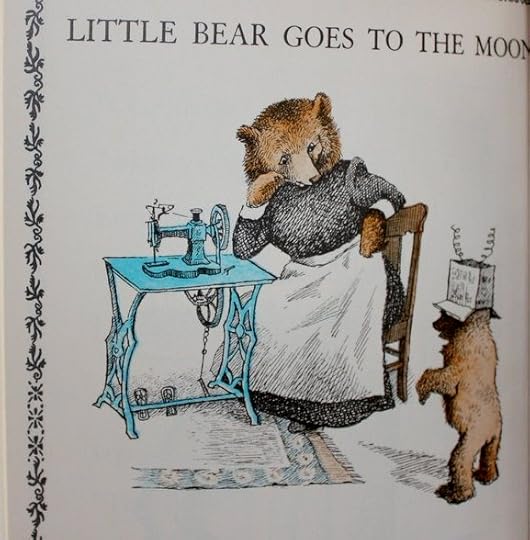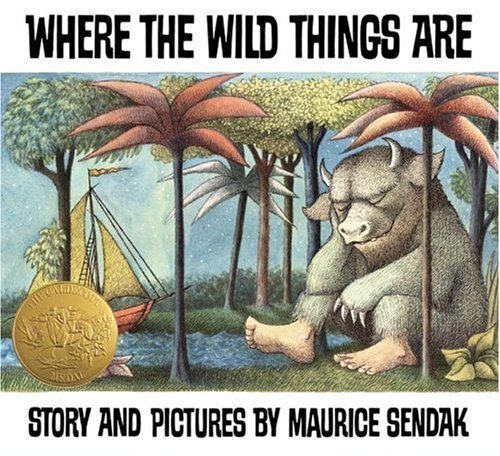A Tribute to Maurice Sendak
Maurice Sendak‘s illustrations for Little Bear, written by Else Holmelund Minarik, creeped me out when I was very young. Especially the story about Little Bear pretending to go to the moon. For me, it was kiddie Twilight Zone. Sendak’s cross-hatched images of Little Bear and his mother on spare white backgrounds created a deeply unsettling mood I’ll never forget.
When I grew up, he became a mentor by example. The man loved his craft. Look at the details in this illustration the specificity of the sewing machine with all its parts lovingly described, the piping on the mother’s dress at the shoulder, the little notch in the chair back, the very bearish anatomy of Little Bear’s arms and legs. Little Bear’s face is thrown into dark shadow as his mother pretends not to know him. CREEPY!
That was the magic in his work — a mood, a flavor, an energy– that grabbed me by the jugular.
Here’s one from Where the Wild Things Are. I’m struck again by how specific and unique the objects are. The railing post with its decorative top — that’s not a generic place-holder for “stair railing.” Same with the fork. You could send somebody to the kitchen to get that fork - “you know, the one with the long, skinny handle, big flat scoop and four prongs.” Even the wall trim is unique. He lavished attention on details. And that cross- hatch induced dream state… Wow! Max is simultaneously leaping wildly and absolutely frozen motionless in time. Sheer brilliance.
 Chicken Soup with Rice is my favorite, probably because I can still hear my mother’s voice as I read it. We spent a lot of time together with this one.
Chicken Soup with Rice is my favorite, probably because I can still hear my mother’s voice as I read it. We spent a lot of time together with this one.
Maurice Sendak spoke at Rhode Island School of Design while I was a student there. Twenty six years later, I vividly remember two things he shared:
1) Books smell good. (The man loved the smell of a book. He was not ashamed at all about this simple pleasure. Made a big point of this in his talk). I took it as permission to delight in the physical materials of my craft.
2) Illustrate BETWEEN the lines. Don’t simply echo the text– enhance it, augment it. If the illustration simply repeats information already given by the text, what’s the point? This pearl of wisdom has guided me for 16 years of visual story telling in children’s books.
On hearing the news of his passing today, I felt what all of us working in the book world are feeling — we’ve lost a giant.
I’m grateful to have been exposed to his work as a child. He helped to shape my intellectual and emotional worlds. As an art student in the mid 1980′s, eager for reports from the front lines, it was a privilege to hear him speak about the craft. He shaped my thinking about the responsibility of picture-making.
Thousands and thousands of us feel the same way. He made vines grow up in our minds, boats carry us for a year and a day, taking us to places we are better for having visited.
Long ago, Maurice Sendak started a wild rumpus. Along with all his fans everywhere, I intend to do my part to keep it going.
Maurice Sendak (1928-2012)

David Slonim's Blog
- David Slonim's profile
- 24 followers







